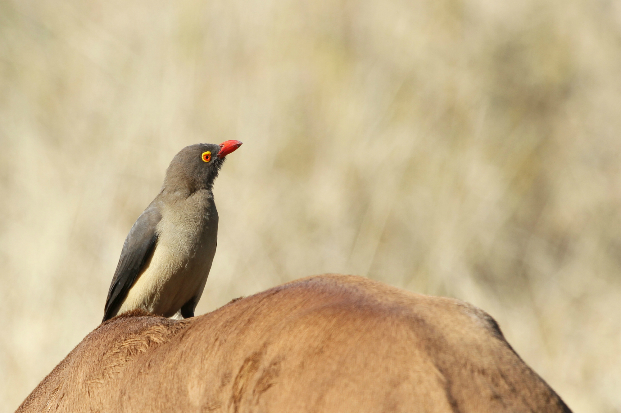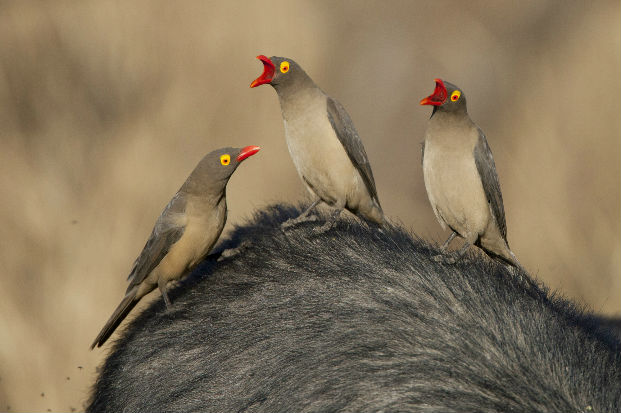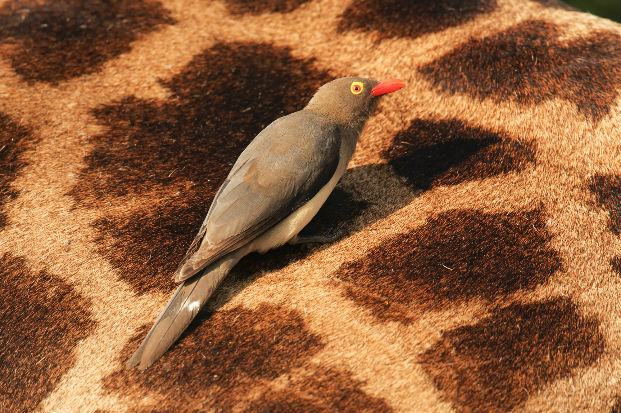Oxpeckers are known for their relationship with large herbivores which they sit on to feed off the parasites that live on their host’s skin. There are two species of oxpecker, the red-billed (Buphagus erythrorhynchus) and yellow-billed (Buphagus africanus). Both were on the verge of extinction in South Africa due to the widespread use of toxic cattle dips.
Vote for the fact you find most fascinating
The name for a group of oxpeckers is a fling.
Recent research suggests that the number of parasites removed from the coat of an animal by the oxpecker is not sufficient enough to outweigh the negative impact that the bird makes by keeping old wounds open.
The tail feathers of an oxpecker are stiffened to act as a support when it is feeding on the side of a herbivore. It props them up like a woodpecker on the side of a tree.
Oxpecker courtship and copulation usually takes place on the back of their herbivore host.
Oxpeckers feet are adapted for clinging to the sides of herbivores. Their legs are short to get the bird close to the skin, their claws are sharp and curved for optimum purchase and, they have 2 toes facing forward and 2 backwards for a better grip.
Oxpeckers will alert the herbivore they are perching on of danger by flying off in a noisy manner. However, recent observations have suggested that this may be more when they are disturbed by man rather than predator carnivores such as a lion.
An adult oxpeckers can consume 100 swollen ticks in a day or 12,000 of their larvae.
Oxpeckers nest in natural cavities in trees such as the leadwood. They line their nest with grass and hair that is actually pulled from their host animal. Any holes in the nest wall are filled with herbivore dung.







